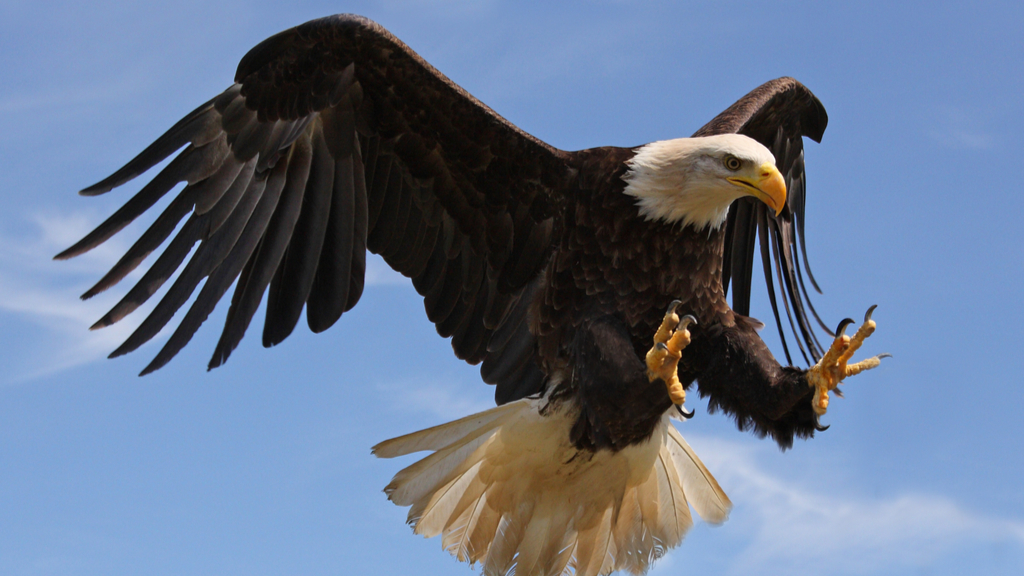Bald Eagle Attacks State Drone Sending It To The Bottom Of Lake Michigan
(CBS DETROIT) - A $950 drone belonging to the State of Michigan was being flown to document shoreline erosion damage in the Upper Peninsula when it was suddenly a bald eagle launched an airborne attack. The large bird tussled with the drone briefly and then ripped off one of the drone's propellers and sent it to the bottom of Lake Michigan near Escanaba.

Hunter King, a pilot for the Michigan Department of Environment, Great Lakes, and Energy (ironically EGLE) was operating the drone when the July 21 attack occurred. He was mapping shoreline erosion for use in the agency's efforts to document and help communities cope with high water levels.
King had completed about 7 minutes of the mapping flight - his fourth of the day in the area - when satellite reception got spotty. He pressed the "Go Home" recall button. The drone returned on a strong satellite feed.
King was watching his video screen as the drone returned home when suddenly it began twisting furiously. "It was like a really bad rollercoaster ride," said King. When he looked up, the drone was gone, and an eagle was flying away. A nearby couple, whose pastimes include watching the local eagles attack seagulls and other birds, later confirmed they saw the eagle strike something but were surprised to learn it was a drone. Both King and the couple said the eagle appeared uninjured as it flew from the scene of the crime.
The drone, a $950 Phantom 4 Pro Advanced, is no longer in production, and will be replaced with a similar model.
Data from the flight records detailed the drone's final moments:
- The eagle strike occurred 7:39.7 into the flight roughly four-tenths of a mile from King and 162 feet above the water
- Its speed instantly dropped from 22 mph to 10. Within a half-second the flight record shows the beginning of downward spiral along with "excessive spinning" warnings
- In the next 3.5 seconds the drone sent 27 warning notifications including one indicating a propeller had been torn off
- Gaining momentum as it fell, its last communication came at 34 feet above the water, falling at 30 feet per second, or 20.4 mph.
The attack could have been a territorial squabble with the electronic foe, or just a hungry eagle. Or maybe it did not like its name being misspelled. EGLE's drone team is considering steps to reduce the possibility of a repeat attack, including possibly using "skins" or other designs on the aircraft to make them look less like seagulls.
Eagle populations have rebounded in Michigan. A 2019 U.S. Fish and Wildlife Service survey showed 849 active nesting sites In Michigan, up from a low point of 76 nesting sites in the 1970s.
EGLE reached out to the Michigan Department of Natural Resources to see if it might issue a citation or violation notice to the rogue eagle. A spokesperson said the agency has no mechanism or authority to issue corrective action notices to individual, non-human wildlife, noting it would likely take an act of the legislature to do so. Even then, it might be subject to a legal challenge. "Unfortunately, there's nothing we can do," the spokesman said. "Nature is a cruel and unforgiving mistress."
SOURCE: Department of Environment, Great Lakes, and Energy (EGLE)
© 2020 CBS Broadcasting Inc. All Rights Reserved. This material may not be published, broadcast, rewritten, or redistributed.



